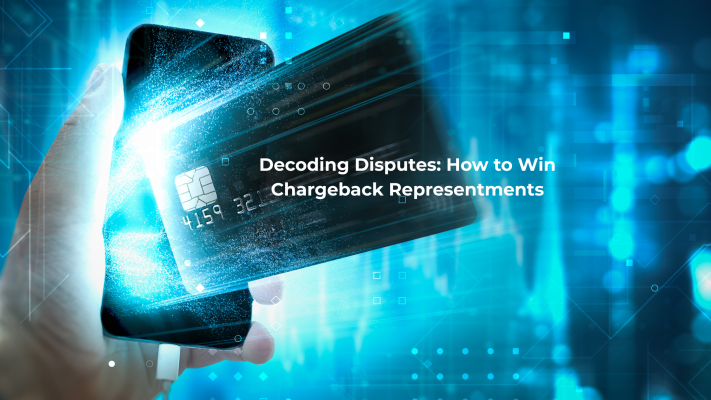
-
By edatacards@gmail.com
- In Business chargebacks Payment Processing Payments Security Technology
Chargebacks are a growing pain point for merchants across industries — not just because of the lost revenue, but because they also increase processing costs, trigger penalties, and can ultimately threaten your ability to operate.
But here’s the good news: not all chargebacks are final.
With a solid representment strategy, you can fight back and recover lost revenue — especially when disputes are based on errors, fraud, or miscommunication. In this blog, Bankassure.com breaks down everything you need to know to decode chargeback disputes and successfully win representments.
🔍 What is a Chargeback Representment?
Representment is your opportunity to challenge a chargeback by presenting evidence that the transaction was valid and authorized. It’s called “representment” because you’re re-presenting the charge to the issuing bank along with supporting documentation.
This is your formal defense — and how well you build it directly impacts whether you recover the funds or not.
🧾 When Should You Dispute a Chargeback?
You should consider representment if:
-
The customer received the product or service as promised.
-
The chargeback is based on friendly fraud (i.e., buyer’s remorse or false claims).
-
There was a duplicate dispute or bank error.
-
You have clear documentation showing the charge was valid.
If the chargeback is clearly due to a genuine issue (e.g., shipping error, product defect), it’s often better to accept it and improve internal processes.
🛠️ Key Steps to Winning a Chargeback Representment
1. Understand the Reason Code
Every chargeback comes with a reason code issued by the card network (Visa, Mastercard, etc.). This determines what evidence you’ll need. For example:
-
“Product Not Received” may require delivery confirmation.
-
“Unauthorized Transaction” needs proof of identity verification or IP logs.
2. Gather Solid Evidence
Include all the documents that support your case:
-
Proof of delivery (tracking numbers, signed receipts)
-
Order confirmation emails
-
Screenshots of customer interaction or chat logs
-
Terms and Conditions (agreed to at checkout)
-
Refund and return policy
-
CVV, AVS match confirmation (if available)
-
Proof of download (for digital goods)
3. Write a Clear and Professional Rebuttal Letter
Your chargeback response letter should clearly explain why the transaction was valid and counter the claim made by the customer. Keep it concise, fact-based, and formatted to the card network’s standards.
4. Submit Within the Deadline
Each card brand has a specific timeframe (usually 7 to 30 days) for submitting a representment. Miss it, and you lose your chance to dispute.
🧠 Pro Tips to Maximize Your Success Rate
-
Automate Dispute Management: Use tools that flag chargebacks early and manage submissions efficiently.
-
Use Chargeback Alerts: Partner with Verifi or Ethoca to intercept disputes before they become chargebacks.
-
Track Win/Loss Data: Analyze dispute outcomes to improve future responses.
-
Keep Policies Visible: Clear terms at checkout can save you from “item not as described” disputes.
💼 How Bankassure.com Can Help
At Bankassure, we provide intelligent chargeback management solutions that empower businesses to:
-
Detect and categorize chargebacks instantly
-
Prepare tailored representment packages
-
Integrate real-time chargeback alerts
-
Access analytics to identify patterns and prevent future disputes
Whether you’re a small eCommerce brand or a high-risk merchant, our platform is built to reduce losses and maximize dispute recovery.
✅ Final Thoughts
Winning chargeback disputes isn’t just about reacting — it’s about having a proactive strategy, airtight documentation, and the right support system.
Let Bankassure.com be your defense line against revenue loss.
We help merchants fight smarter, faster, and more effectively — because your money shouldn’t be up for grabs.